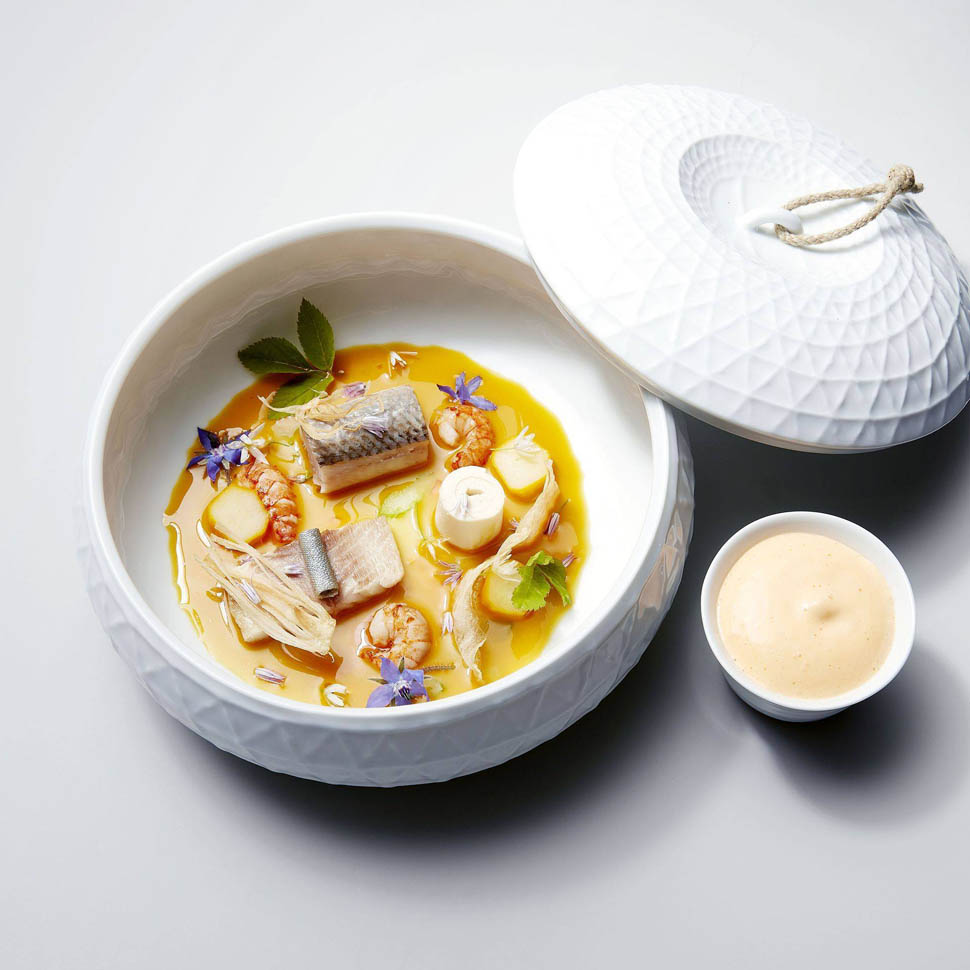Jean Sulpice adapts his cuisine to environmental challenges and the new needs of consumers. Fine dining is not just about eating well but living an experience.
The opinion
As the Romans already said 2,000 years ago: "de gustibus et coloribus non disputandum" (there's no accounting for taste). With the growing awareness of the harmful effects of global warming and the pursuit of a healthier lifestyle, the eating habits and cooking styles of top chefs have changed significantly in recent years. Jean Sulpice, a two-star chef at Auberge du Père Bise in Talloires (Haute-Savoie), influenced by the Alpine region surrounding him, explains these changes to France Info.

"With a constantly changing climate, we are much more sensitive to nature. Nature dictates our desires and resources." Indeed, after experimenting with various recipes in major cities worldwide, the chef chose to focus on products from his native region, dominated by the Alps. For him, like an increasing number of Michelin-starred chefs, this means cooking in an ultra-local way. "When I look at menus from the '80s and '90s, I see lobsters, sea bass, scampi... products that are not local at all, and for me, this makes no sense today." In their place are river shrimp, perch, trout, and lake pike.

Jean Sulpice prefers to work with local producers, beekeepers, fish farmers, and winemakers committed to producing quality food. His dishes are also enriched with aromatic plants from his garden. For some Michelin-starred chefs, growing their own produce is a trademark, and consumers are not dissatisfied with this cuisine. On the contrary. "Today, people don't want to eat like they used to. Customers are more interested in sports and feeling good about their bodies," explains the chef.

"Back in the days, people went out to eat to fill their stomachs. Today, when you go to a gourmet restaurant, it's not just for eating but for experiencing. It's about pure wonder, a journey. You take the necessary time, you prepare before sitting down. And you let yourself be carried away." Consequently, less rich, less fatty, less sweet, less salty, and fresher dishes are favored.

There is also more acidity and vegetable presence in preparations. "This is because the opening of borders has created an open mindset. People travel more. For example, when you go to Japan, you see what fish you can eat raw and how," explains the chef. For Jean Sulpice, the experience of Michelin-starred gastronomy is a two-way street. It's a source of wonder for customers and a constant search for new ideas, a creative instinct in the kitchen.

This creative and ecological approach has earned him a green star for his environmental and sustainable commitment. "Everything on the table comes from my region and the people who produce it, down to the wooden dishes, tableware, and ceramics," explains the chef, who is pleased that more and more gourmet restaurants are adopting this responsible model, even if certain habits are still ingrained in hotel management schools.











